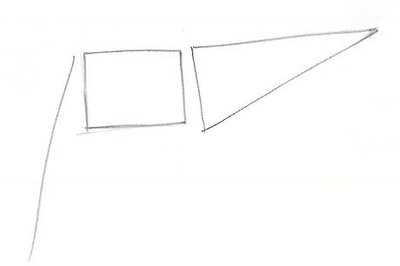
views
We have stationed ourselves in Gwalior. We head out everyday through the by lanes of rural Madhya Pradesh- towards the small town of Amba that lies on the edge of the river Life here is much the same- globalisation, coffee outlets and flashy restaurants haven't reached this part of rural Madhya Pradesh. And in a small way I find that very heartening. Quick stop for a chai and pyaaz pakoda ( that's all that's available) and we begin our long and bumpy journey to the river. And when we are there-its worth it
Walking through a trail of sand we reach the river. I am spellbound. A full wildlife tableaux on display on the small isles in the middle of the river- sunbathing crocodiles, gharials and over 20 species of migratory birds preening their feathers. There's tranquility and a deafening silence- it's almost like we have reached the edge of the world- where the only inhabitants of this land are some farmers and the crocs! My last assignment was to document the pollution in the Ganga. In comparison- The Chambal is probably the cleanest river. No dead bodies. No plastic. No toxic chemicals from polluting industries. Just crystal clear peaceful waters. By a strange quirk of Indian mythology the river is crystal clean. Chambal is said to have originated from the blood of cows sacrificed by an Aryan King in his quest for supremacy. Threatened by the King's ambitions, the Brahmins placed a curse upon his head, and all that was associated with him, including the bloodied river. And if ever there was a blessing in disguise - this is it! The Chambal remains one of India's most pristine and unpolluted rivers, home to a rich diversity of flora and fauna. I am fascinated right now just by the topography. Checkered brown ravines over a vast expanse under a clear blue sky- that's all we can see for miles around.
But this peace is ephemeral. Soon trucks descend on the river in hordes... As they dig up the sand- it's the same sand, which holds the genetic pool of the gharials. And we know now why the gharials are declining. Their eggs are destroyed with the rampant sand mining happening along the banks of the river. As we approach them with our camera and microphone not one sand mining contractor is scared of being caught on national television. The law is truly an ass for these contractors. Mining in the sanctuary is strictly prohibited but it continues unabated. Each truck sells sand for Rs 400- the eggs of the gharials that are dug up in the process are priceless.
As we move around we are helped by a local panchayat person- he informs us we are in the village of famed dacoit Jagdeesh Parihar. He comforts us- we need not worry. The dacoit and his men only loot rich people. I am praying that in my rag-tag jeans I look sufficiently poor.
On our last day we lug our heavy camera, tripod and equipment walking miles along the river hoping for a glimpse of the elusive gharial. As we continue our investigation theres more bad news. Fishing in the sanctuary continues unabated- that means there's less food available for the water predators. And with fishing, there are more problems for the gharials. The fishermen chop off their head and tail when the gharials get entangled in their nets. It's a sad moment to see pictures of gharials with their heads chopped. Or a gharial with its snout chopped- it was still alive and managing despite the blows of the fishermen.
The train journey back to Delhi - I am leaving with a heavy heart. Once again I am walking away from a species that is dying a slow death. The battle to save India's wildlife is a complex one. And reporting on wildlife is but one small effort in joining the dots. As my Special Investigations Team- Saif, Rohit, Rahul and Shashi get into the task of helping me put the story together-Somewhere there is a hope that as the visuals of our story beam into the drawing rooms of hundreds of homes across India the peace of Chambal and the queen of the Chambal- the INDIAN GHARIAL is preserved for posterity.About the AuthorBahar Dutt Bahar Dutt is a wildlife conservationist by training. She has worked for the last ten years on crucial wildlife conservation projects in India and abr...Read Morefirst published:January 29, 2007, 21:46 ISTlast updated:January 29, 2007, 21:46 IST
window._taboola = window._taboola || [];_taboola.push({mode: 'thumbnails-mid-article',container: 'taboola-mid-article-thumbnails',placement: 'Mid Article Thumbnails',target_type: 'mix'});
let eventFire = false;
window.addEventListener('scroll', () => {
if (window.taboolaInt && !eventFire) {
setTimeout(() => {
ga('send', 'event', 'Mid Article Thumbnails', 'PV');
ga('set', 'dimension22', "Taboola Yes");
}, 4000);
eventFire = true;
}
});
window._taboola = window._taboola || [];_taboola.push({mode: 'thumbnails-a', container: 'taboola-below-article-thumbnails', placement: 'Below Article Thumbnails', target_type: 'mix' });Latest News
It's the land of the dacoits. This is Chambal- a landscape made famous by Bollywood film Sholay. My mission is different. I am here to investigate why the Indian gharial the top water predator of the river Chambal is facing extinction. Few even know about this weird creature with the weird name. Named after a ghada or a 'pot' due to the round snout at the edge of its very long nose, the gharial is distinct from its cousin the Indian Mugger also found in the Chambal waters.
We have stationed ourselves in Gwalior. We head out everyday through the by lanes of rural Madhya Pradesh- towards the small town of Amba that lies on the edge of the river Life here is much the same- globalisation, coffee outlets and flashy restaurants haven't reached this part of rural Madhya Pradesh. And in a small way I find that very heartening. Quick stop for a chai and pyaaz pakoda ( that's all that's available) and we begin our long and bumpy journey to the river. And when we are there-its worth it
Walking through a trail of sand we reach the river. I am spellbound. A full wildlife tableaux on display on the small isles in the middle of the river- sunbathing crocodiles, gharials and over 20 species of migratory birds preening their feathers. There's tranquility and a deafening silence- it's almost like we have reached the edge of the world- where the only inhabitants of this land are some farmers and the crocs! My last assignment was to document the pollution in the Ganga. In comparison- The Chambal is probably the cleanest river. No dead bodies. No plastic. No toxic chemicals from polluting industries. Just crystal clear peaceful waters. By a strange quirk of Indian mythology the river is crystal clean. Chambal is said to have originated from the blood of cows sacrificed by an Aryan King in his quest for supremacy. Threatened by the King's ambitions, the Brahmins placed a curse upon his head, and all that was associated with him, including the bloodied river. And if ever there was a blessing in disguise - this is it! The Chambal remains one of India's most pristine and unpolluted rivers, home to a rich diversity of flora and fauna. I am fascinated right now just by the topography. Checkered brown ravines over a vast expanse under a clear blue sky- that's all we can see for miles around.
But this peace is ephemeral. Soon trucks descend on the river in hordes... As they dig up the sand- it's the same sand, which holds the genetic pool of the gharials. And we know now why the gharials are declining. Their eggs are destroyed with the rampant sand mining happening along the banks of the river. As we approach them with our camera and microphone not one sand mining contractor is scared of being caught on national television. The law is truly an ass for these contractors. Mining in the sanctuary is strictly prohibited but it continues unabated. Each truck sells sand for Rs 400- the eggs of the gharials that are dug up in the process are priceless.
As we move around we are helped by a local panchayat person- he informs us we are in the village of famed dacoit Jagdeesh Parihar. He comforts us- we need not worry. The dacoit and his men only loot rich people. I am praying that in my rag-tag jeans I look sufficiently poor.
On our last day we lug our heavy camera, tripod and equipment walking miles along the river hoping for a glimpse of the elusive gharial. As we continue our investigation theres more bad news. Fishing in the sanctuary continues unabated- that means there's less food available for the water predators. And with fishing, there are more problems for the gharials. The fishermen chop off their head and tail when the gharials get entangled in their nets. It's a sad moment to see pictures of gharials with their heads chopped. Or a gharial with its snout chopped- it was still alive and managing despite the blows of the fishermen.
The train journey back to Delhi - I am leaving with a heavy heart. Once again I am walking away from a species that is dying a slow death. The battle to save India's wildlife is a complex one. And reporting on wildlife is but one small effort in joining the dots. As my Special Investigations Team- Saif, Rohit, Rahul and Shashi get into the task of helping me put the story together-Somewhere there is a hope that as the visuals of our story beam into the drawing rooms of hundreds of homes across India the peace of Chambal and the queen of the Chambal- the INDIAN GHARIAL is preserved for posterity.


















Comments
0 comment